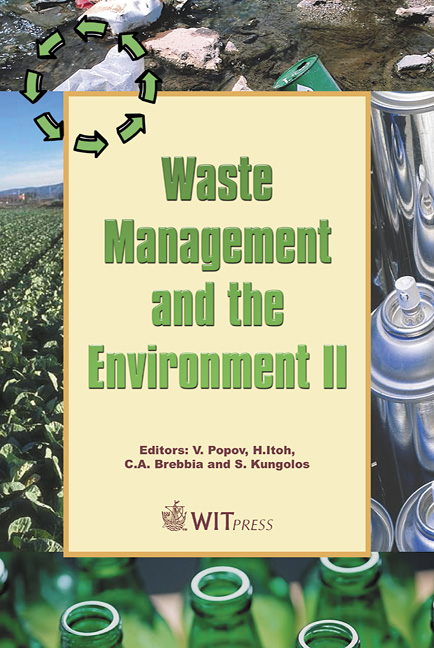Vermicomposting For The Bioremediation Of PCB Congeners In SUPERUND Site Media
Price
Free (open access)
Transaction
Volume
78
Pages
8
Published
2004
Size
313 kb
Paper DOI
10.2495/WM040121
Copyright
WIT Press
Author(s)
J. Tharakan, A. Addagada, D. Tomlinson & A. Shafagati
Abstract
In this study we investigated the potential of using earthworms (E.foetida) to effect the biotransformation of polychlorinated biphenyls (PCB’s) in sludge and sediment from the Ralston Street Lagoon (RSL) SUPERFUND site in Gary, IN. Vermiomposting bioreactors (VB’s) were established with mass fractions of contaminated sludge ranging from 10% to 75%. The VB’s comprised a drainage layer overlaid with a mesh screen and then the earthworm bedding mixed with contaminated sludge. The VB’s were each inoculated with equal biomass of earthworms. Suitable negative controls to monitor reproduction and biomass increase without contaminated sludge were also established. The VB’s were kept moist by water spray and earthworms were periodically fed cornmeal. At set times, VB’s were sampled and analysed by GC-ECD for PCB levels. Earthworm biomass and number were also measured. Results demonstrate that earthworms survived and reproduced in the presence of contaminated media; however, biomass increase decreased rapidly with increasing mass fraction of sludge. Biomass increased ranged from 103% in the negative control to biomass reduction of 54% with 75% sludge. Gas chromatography results demonstrated an 80% reduction in PCB level in all VB’s, although the time required for this level of reduction increased with increasing sludge mass fraction. Analysis of earthworms showed elevated PCB levels in the worm. These results suggest vermicomposting may be a viable option for on-site in situ bioremediation and site clean-up. Keywords: vermicomposting, earthworms, polychlorinated biphenyls, bioremediation, SUPERFUND.
Keywords
vermicomposting, earthworms, polychlorinated biphenyls, bioremediation, SUPERFUND.





